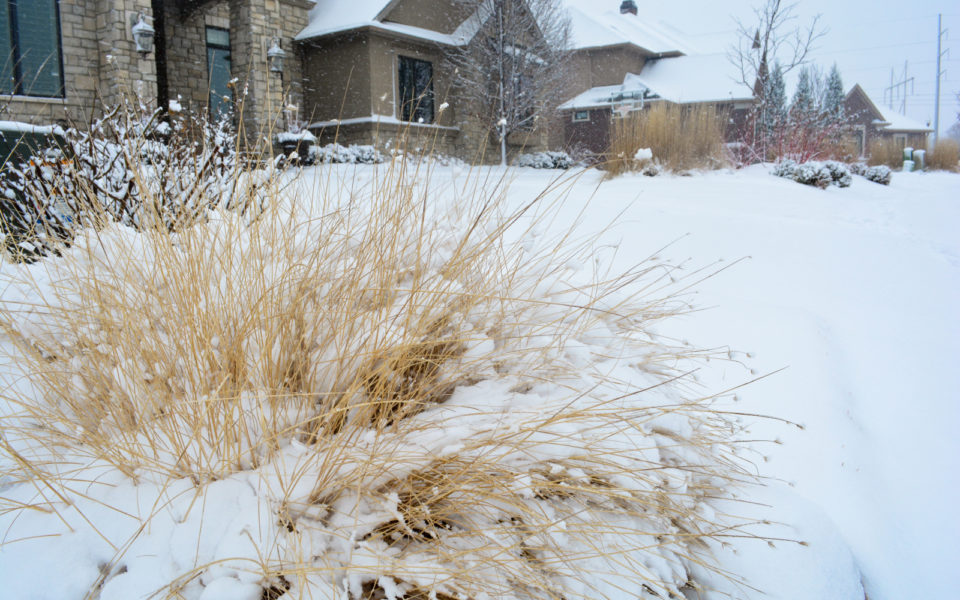Ornamental Grasses in Winter: Should I cut them back or leave them?
As winter settles in Nebraska, many homeowners have already put their garden to rest. But, when it comes to your ornamental grasses, you may want to think twice. Why? Standing grasses can provide stunning contrast, movement, structure and texture, as well as, ample benefits for local wildlife. Which grasses should you leave up? Which should you take down? Here are a few tips.

Ice crystals on switchgrass (Panicum virgatam)
Is it evergreen grass or sedge?
Some varieties will stay green well into the winter or even throughout the winter, these should not be cut back in the fall, as it could kill them. A key rule of thumb, if there is still green leaves by winter, it should be cut back in the spring/late winter when the vegetation is dry and brown. Examples include: any variety of sedge (carex), lily turf (lirope), and blue fescue bunch grasses.
Distinguish between wide fleshy and narrow sturdy leaves
Grasses with wide fleshy leaves tend to flop and shred under the weight of winter snow, these can look messy and be hard to clean up in the winter. Examples include: Fountain Grass (Pennisetum) and Maiden grass(Miscanthus). Ornamental grasses with narrow leaves and a sturdy base catch less snow and their seedheads generally hold up better. Examples include: Feather Reed Grass, Northern Sea oats and Shenendoah Switchgrass.
It all depends on preference.
You may want to leave cleaner, sturdier grasses up close to the house, but leave more fleshy grasses to the border of the garden. Feel free to experiment because you can cut them back any time in the winter if you change your mind (unless the leaves are green). It’s also important to cut them back by early spring otherwise you will have a mess of green portions and dead portions which can be unsightly and be unhealthy for the plant.
Wildlife benefits
The seedheads and cover provided by the grasses are very attractive to Goldfinch, Junco and Threshes. In fact, seedheads and fruit can make up around 90 percent of the fall and winter food supply for the Northern Cardinal (Minnesota DNR). Stems can provide valuable habitat for butterfly larvae, and other important insects to overwinter.
Our Favorites:
[rev_slider Wintergrasses]
Looking to add ornamental grasses to your landscape? Our experienced designers and horticulturalists can help you choose the right plant for the right place to add year round beauty. Breaking Ground operates throughout the Omaha metro area as well as Gretna, Fremont, Valley and Bennington. Contact us for a free design/maintenance consultation.
[gravityform id=”1″ title=”true” description=”false”]
